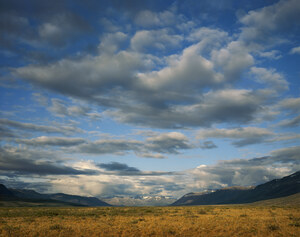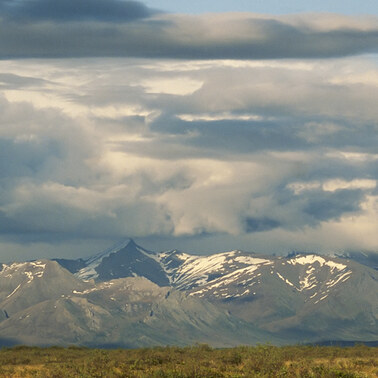
Noatak sky, Alaska
Looking east—up the canyon of the upper Noatak River basin in the Brooks Range of Alaska. My rafting party and I were about as far from human habitation as one can get in the United States, having flown in hundreds of miles to land on a lake beside the river, knowing that our only way back was to float and row 350 miles downstream, to an Inuit village with an airstrip. It was an oddly spacious, and not particularly threatening, feeling. The mountains in the center of the view are over 25 miles distant! It is early evening in late June, but being well above the Arctic Circle, the sun would never even come close to setting, for the entire twenty days to come. Contrary to our expectations, the constant daylight was anything but objectionable. Less can be said for the truly impressive hordes of mosquitoes.
We've all heard or seen how the summer sun swings in a broad circle around the sky above the Arctic Circle, dipping near the horizon near midnight, and rising well into the sky near noon, but have you ever considered what a solar year would look like viewed from either of the poles? At the North Pole (where there is no land, only floating ice), on the summer solstice the sun would describe essentially a perfect circle around the sky, everywhere equidistant (23 1/2 degrees of arc) above the horizon. As the year progressed toward the autumnal equinox, the sun would wind its way down in a great, fine spiral, taking just about one day to finally screw its way, bit by bit, below the flat horizon. One would then have to spend six months in twilight and darkness before once again seeing the sun.

